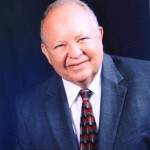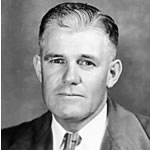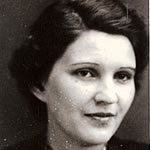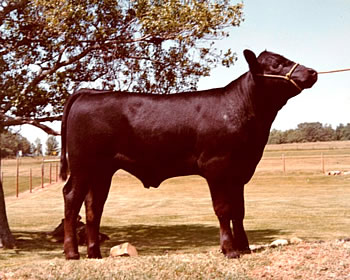By James W. Cofer, president, Snellville Historical Society | This is the story of two local residents who dedicated their lives to educating Snellville’s children, maintained a second career of raising pigs, Holstein cows, and finally Black Angus beef cattle, and parlayed their success into franchising and artificial insemination of national championship Angus thoroughbreds.
It’s the story of Blanche and Troy Thomason, former Snellville residents.
“Mr. Troy” Thomason was born on July 20, 1913 in Cobb County, his father a farmer, and his mother a school teacher. At the age of 12, Troy moved to the Snellville area with his family and graduated from Snellville Consolidated School in 1932.
Troy followed a sister, who had gone to Berry College in Rome, Ga. After receiving his teaching certificate, Troy returned to Gwinnett to begin teaching at Centerville and later at Sugar Hill. Next Troy became principal at Suwanee for two years, and at Centerville as principal for a year. He earned his A.B. degree in education from Oglethorpe University in 1941 and his Master’s Degree from Oglethorpe in 1943. Troy also spent some time in the defense industry, working as an auditor for Bell Bomber in Marietta.
Troy met Blanche Norton, a Snellville girl, and they were married on July 10, 1936. Blanche’s mother was the sister of Troy’s future mentor and principal, W.C. (Bill) Britt.
The couple purchased a 70-acre tract east of downtown Snellville (under the big oak tree), purportedly for a price of $40 per acre.
Troy served under Bill Britt for the 1946/47 school year. He taught eighth grade and coached basketball during some of those years until 1956, at which time Principal Britt retired, and Troy became principal for all 12 grades until South Gwinnett High opened in 1957. Troy continued as principal of grades 1-8 until 1969, when the school divided into W.C. Britt Elementary and Snellville Middle School. He became principal of Britt Elementary and served until retirement in 1972.
Blanche was an achiever in her own right, teaching fourth grade for 38 years, and selected as ‘Teacher of the Year’ in 1971. She began teaching at age 19, even before she received a teaching certificate.
The Thomasons continued supplementing their teaching incomes by expanding to pigs and then cows, mostly Holsteins by the 1950s. Thomason transitioned to Black Angus beef cattle in the late 1950s. He often employed professional ‘dressers’ at state and national shows to parade the cattle around the ring and position them for best appearance. Troy never showed his own cattle.
From the outset, Troy chose to raise a few (typically 9-13) animals, those of the top bloodlines. One afternoon Troy asked Bill Britt: “I just sold one of my Angus bulls; how much would you guess I got for him?” Mr. Britt mulled: “About $800-1,000?” Troy slowly extended a check for $100,000 for that bull!
Later he would win distinction at state fairs in Missouri, Iowa, Nebraska, Kansas, Oklahoma and other national shows. The cattle producing western states certainly must have taken note of this school teacher from Snellville walking away with all of their top prizes.
One day in 1981 a helicopter carrying investors landed out in the Thomason pasture and negotiated with Troy to buy half interest in one of his most prized young bulls…..at a price of $250,000. They also bought the bull’s mother for an additional $50,000. Later that bull was then valued at $2 million.
Having demonstrated that he could raise championship bulls and heifers, Troy then parlayed his expertise into thoroughbred artificial insemination. Troy employed an advanced technique which amplified the effectiveness by a factor of 30 or more. He would artificially breed one of his championship females to a bull of equal heritage, but then ‘flush out’ and collect the large number of eggs after they had been fertilized. His vet would collect the eggs and insert them into larger brood cows (typically Holsteins) who would carry the embryo to full term, thereby producing a thoroughbred Angus calf from a non-Angus mother. The larger Holsteins produced larger calves, more milk, and had less delivery problems than the smaller Angus females.
“Mr. Troy” died at age 86 on February 22, 2000, and is buried at Eternal Hills Memorial Garden. Blanche followed in death on May 9, 2004.
(Editor’s Note: This article is excerpted from the quarterly newsletter of the Snellville Historical Society, and used with permission. –eeb)













Follow Us